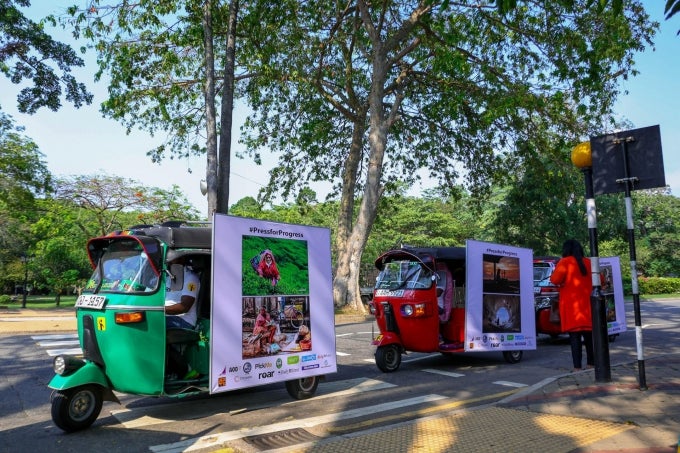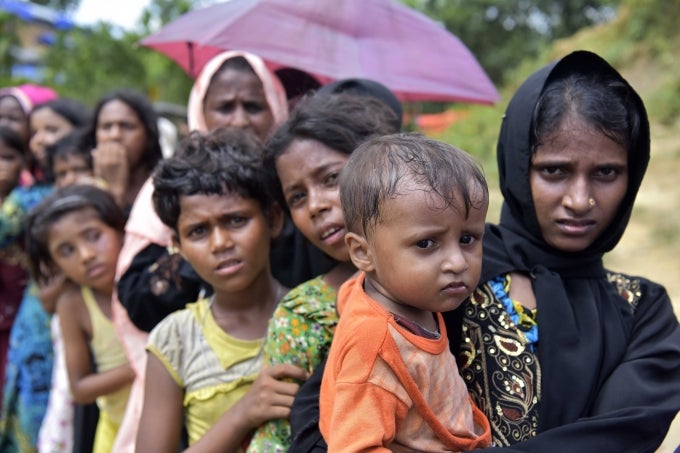I just ended my first round of country visits as the World Bank’s Vice President for the South Asia Region. Over and above all, I have been immensely impressed by the resilience, determination, commitment and innovation of the women leaders that I had the privilege to meet during my visits.
These women are succeeding in a region where it is hard for women to realize their career dreams. In South Asia, only 28 percent of women ages 15+ are employed, compared to 48 percent worldwide .
What better opportunity than International Women’s Day to give a huge shout-out and applaud those women who are role models, entrepreneurs, and leaders in the eight countries of South Asia.

It is great to see women leaders in the civil service cadre across South Asia. Take Neha Sharma, the district magistrate in Baghai village, about 200 kilometers from the Indian capital of New Delhi who easily connects to the elders and the school children in this rural setting as she leads the local campaign for the government’s Swachh Bharat Mission to achieve an open defecation free India.
It is no longer a surprise to see women in cutting-edge creative jobs. Take Sanchita Lama, she is the Animation Lead at Incessant Rain Animation Studios in Nepal. After studying for four years in Japan, she is now in charge of adding special effects to scenes of blockbuster movies from the Disney label . I will certainly look for her credits the next time I go to the movies.
It is so great to see how women across South Asia break into traditional male jobs. Take Rasika Deepthi, who I met as she stood beside her three-wheeler rickshaw outside the Old Town Hall in Colombo, Sri Lanka. Rickshaw drivers are usually men but Rasika said the job is still a good one for her. She has used her savings to buy a car, and now rents out one vehicle while driving the other herself.

It is fascinating to see how women organize themselves into self-help groups. Take Sameera Ibrahim, President of the Women’s Development Committee in Baa Maalhos, Maldives. Sameera and other women are leading her community’s waste management. There was no rubbish and no plastic strewn in the streets . The village looked welcoming and this will bring money and progress to this remote atoll.
It is encouraging to hear from women who became role models for others. Take Sonia Iqbal, who I met in Afghanistan and who was the first girl in her family who went to school abroad, breaking a cultural barrier for herself and generations of women to come. She returned to Afghanistan after getting her education in the US and UK and has become a leader in civil society.
It makes all the difference when women start their own business and become self-reliant. A great example that comes to mind is Sara Khurram, the Chief Executive Officer and Co-founder of Sehat Kahani in Pakistan. Sara won the Youth Entrepreneurs award for developing an innovative tele-health platform that connects unemployed female doctors with patients from poor families .
It is equally inspiring to see an increasing number of women in political leadership positions across the region. Take Dechen Wangmo, Minister for Health in Bhutan and the sole woman in the cabinet. She is advancing women’s interests and rights through giving emphasis on reproductive and sexual health, HIV/AIDS, and community health systems .

At times, it is the women whose names we may not remember, but who one can’t forget. Take the two young mothers I met in the Rohingya camp in Cox’s Bazar in Bangladesh. They had arrived two days ago fleeing violence in Myanmar. Despite enduring abuse and discrimination, they were positive and optimistic of a better future for themselves and their children . Their aspirations were modest compared to some of the women I met, but equally important: dignity and identity.
These women - and many more like them who I met during my visits to South Asia - are achieving great things despite the long odds they face as they struggle against societal norms and balance family and work.
Their success makes me confident that by enforcing laws that give women equal rights, making it safe for women to work, and creating the conditions to help entrepreneurial women start their own business, we can turn the corner on the declining trend of female participation in the labor force in South Asia.
This will lead to greater social and financial benefits for their families and their nations.
I applaud all women of South Asia for being so brave, determined, and committed .


Join the Conversation